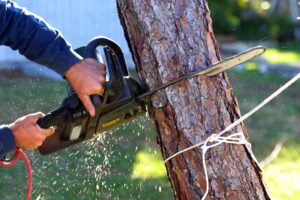Texas Tree Removal Laws: A Comprehensive Guide for 2024
Introduction
Texas, known for its vast landscapes and diverse ecosystems, has a variety of regulations governing tree removal. These rules vary greatly depending on whether the tree is on private, commercial, or public property, and they are largely defined at the city and county level. While there is no single statewide statute overseeing tree removal, Texas property owners need to be aware of local regulations, protected tree species, and permit requirements to stay compliant with the law. This article provides an overview of Texas tree removal laws, detailing city-specific regulations, general guidelines, and advice for property owners.
Texas Tree Removal Laws: A General Overview
Statewide Guidelines and Property Rights
While Texas does not have a single statewide law regulating tree removal, property rights play a significant role in determining the removal process. Generally, if a tree is located entirely within a property owner’s boundary, the owner has the right to remove it. However, various local ordinances, city codes, and regulations may impose restrictions, especially if the tree is classified as a “protected” or “heritage” tree.
The Role of Local Ordinances
In Texas, cities and counties are given the authority to regulate tree removal through local ordinances. This means rules and requirements for tree removal may differ significantly from one municipality to another, often depending on the region’s ecological needs and the city’s urban forestry policies.
For statewide information on property rights and tree protection, you can visit the Texas A&M Forest Service: Texas A&M Forest Service.
Tree Removal Laws by Major Cities in Texas
The following is an overview of tree removal regulations in some of the largest cities in Texas, outlining permit requirements, protected tree policies, and specific guidelines.
| City | Residential Permit Requirement | Commercial Permit Requirement | Protected Trees & Special Considerations |
|---|---|---|---|
| Austin | Permit required for trees over 19 inches DBH | Permit required for any “protected” tree | Heritage trees (>24 inches DBH) need special permits |
| Dallas | Permit not required unless tree is protected | Permit required for protected or landmark trees | Certain species and large trees protected |
| Houston | Permits needed for trees within public right-of-way | Development permits required for removal | Street and public trees heavily regulated |
| San Antonio | Permit required for trees >6 inches in DBH | Permit needed for development projects | Heritage and protected trees identified by size |
For more specific information on city regulations, property owners are encouraged to check their local city’s website or contact their urban forestry division.
Austin Tree Removal Regulations
As the capital of Texas, Austin has specific ordinances designed to preserve its urban tree canopy. The regulations are found in the City of Austin Land Development Code, particularly sections related to environmental protection and tree preservation.
- Residential Property Rules: A permit is required to remove any tree that is 19 inches or greater in diameter at breast height (DBH). For Heritage Trees (defined as trees that are 24 inches DBH or more), additional permissions and a review process are required before any removal.
- Commercial Property Requirements: Commercial properties must comply with Austin’s Tree Protection Ordinance, which outlines rules for tree removal, construction near trees, and tree replacement plans.
- Protected Tree Species: Austin protects certain species of trees, including Live Oaks, Texas Red Oaks, and Cedar Elms. Removing these species without a permit, especially if they exceed the protected size, can lead to fines and penalties.
For more information, visit the City of Austin’s Development Services: Austin Development Services.
Dallas Tree Removal Laws
The city of Dallas takes a balanced approach to tree removal, emphasizing the protection of certain species and large trees while allowing some flexibility for private property owners. The regulations are part of the Dallas City Code, Article X.
- Residential Tree Removal: Private property owners do not need a permit to remove trees unless they are classified as protected or landmark trees. Protected trees are typically those with a DBH greater than 8 inches, and landmark trees are those with special historical or ecological significance.
- Commercial and Development Projects: Commercial properties and developments must follow the Urban Forest Conservation Ordinance, which requires permits for tree removal and detailed tree surveys for construction projects.
- Replacement and Mitigation: When a protected tree is removed, Dallas often requires the planting of replacement trees or payment into a Tree Replacement Fund to ensure the urban canopy remains balanced.
You can learn more about Dallas tree ordinances here: Dallas City Planning and Urban Design.
Houston Tree Removal and Protection Rules
Houston, the largest city in Texas, has specific rules for tree removal in public spaces, though private property regulations are generally less restrictive.
- Public and Street Trees: Any tree located within a public right-of-way, such as along streets or in parks, is protected by the city. A permit is required to remove or even prune these trees, and applications must be submitted to the Houston Parks and Recreation Department.
- Development and Construction: Trees located on development sites or commercial properties are subject to city regulations, which may include submitting a Tree Protection Plan as part of the overall construction permitting process.
- Residential Trees: Homeowners generally do not need a permit to remove trees on their private property unless the tree is located within a public right-of-way or is part of a city preservation area.
For more details, check out the Houston Urban Forestry Program: Houston Urban Forestry.
San Antonio Tree Removal Regulations
San Antonio has detailed tree preservation laws aimed at protecting its diverse tree canopy. The regulations can be found in the San Antonio Unified Development Code, Chapter 35.
- Residential Permit Requirements: Homeowners need a permit to remove any tree that is 6 inches or greater in DBH. Trees located near public areas or part of a conservation zone may have stricter guidelines.
- Commercial Tree Removal and Development: Commercial developers are required to submit a Tree Preservation Plan for any site that involves tree removal. This plan needs to outline existing trees, those slated for removal, and the mitigation or replanting plans.
- Heritage Trees and Protected Species: San Antonio identifies certain trees as Heritage Trees based on their size and species. Protected species include Live Oaks, Pecan Trees, and other native Texas species. Removing these trees without a permit can result in significant fines.
For more details and permit applications, visit the City of San Antonio Development Services Department: San Antonio Development Services.
Texas Laws for Protected and Heritage Trees
Certain trees in Texas are protected under local ordinances due to their ecological, historical, or cultural importance. These trees often require special permissions for removal, and their protection varies from one city to another.
| Tree Type | Protection Status | Typical City Regulations |
|---|---|---|
| Live Oak (Quercus virginiana) | Frequently protected in multiple cities; requires permit | Permit required for removal; replacement or mitigation often needed |
| Texas Red Oak (Quercus texana) | Highly valued in cities like Austin and San Antonio | Special permits required for larger trees (>24 inches DBH) |
| Cedar Elm (Ulmus crassifolia) | Protected in areas like Austin and Dallas | Removal often requires permit and replacement requirements |
| Pecan Tree (Carya illinoinensis) | State tree of Texas; protected in many municipalities | Permit required for significant trees, especially near public spaces |
Identifying a Protected Tree
If you’re unsure whether a tree on your property is protected, contact your city’s Urban Forestry Division or consult a Certified Arborist to identify the tree species and understand local regulations.
Steps to Follow for Legal Tree Removal in Texas
If you need to remove a tree in Texas, here’s a general guide to the steps you should take to ensure compliance with local laws:
1. Identify the Tree’s Status and Location
- Determine whether the tree is located on private property, within a public right-of-way, or part of a development project.
- Identify if the tree is part of a protected species or considered a Heritage Tree.
2. Check Local City Ordinances
- Review your local city’s tree removal ordinances, which can typically be found on the city’s official website.
- Use resources such as the Texas A&M Forest Service: Texas Tree Information.
3. Apply for a Permit (If Required)
- If a permit is required, submit a Tree Removal Application to the appropriate department, such as the Urban Forestry Division or Development Services.
- Pay any applicable fees and provide necessary documentation, such as a tree survey or arborist report.
4. Comply with Permit Conditions
- Follow any conditions specified in the permit, which may include replanting requirements, payment of mitigation fees, or tree replacement plans.
5. Hire a Professional (Recommended)
- It is often advisable to hire a certified arborist who understands local tree laws and can ensure the tree removal is done safely and legally.
Penalties for Unauthorized Tree Removal in Texas
Removing a tree without the proper permits or violating local ordinances can result in various penalties:
- Fines: These can range from $500 to over $10,000 per tree, depending on the severity of the violation and the city’s regulations.
- Restitution and Mitigation Requirements: Property owners may be required to replant multiple trees or pay into a tree fund to offset the loss of the urban canopy.
- Legal Action: In extreme cases, unauthorized removal of protected or heritage trees can lead to legal action and further penalties.
Always ensure compliance with your local ordinances before proceeding with any tree removal.
Texas tree removal laws are shaped largely by local city and county regulations. While property owners generally have the right to manage trees on their land, it’s crucial to understand the local rules, particularly regarding protected species, heritage trees, and trees in public areas. Checking city ordinances, applying for permits when needed, and hiring a certified arborist are key steps to ensure legal and responsible tree removal. For any further information or specific guidance, contact your city’s Development Services or Urban Forestry Department.



